Few things are more frustrating for a gardener than watching a lush, healthy spinach crop suddenly shoot up tall stalks and bloom into flowers seemingly overnight. This process, known as bolting, signals the end of your spinach’s leafy production — leaving you with bitter-tasting leaves and an unusable plant.
If your spinach keeps bolting faster than you can harvest it, don’t worry. You’re not alone, and there are effective ways to prevent it. Understanding why it happens is the first step toward keeping your spinach beds productive longer.
In this detailed guide, we’ll explain why spinach bolts, the signs to look out for, and the best strategies to delay or prevent bolting, so you can enjoy tender, flavorful greens all season long.
What Is Bolting?
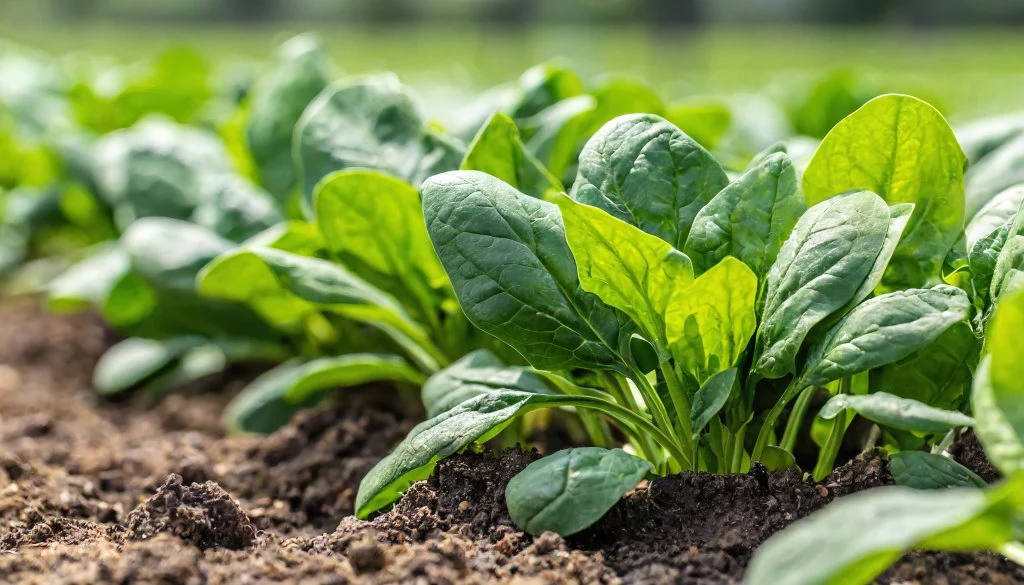
Bolting is a natural survival mechanism that happens when a plant transitions from leaf growth to seed production. It’s triggered by environmental stress — usually heat or long days — that signal the plant it’s time to reproduce before conditions become unfavorable.
When spinach bolts, you’ll notice:
- The central stem grows rapidly upward.
- The leaves become smaller, tougher, and more bitter.
- Tiny flower buds form at the top of the stalk.
Once this process starts, the plant diverts all its energy into seed formation instead of producing edible leaves. Unfortunately, there’s no reversing bolting — but you can prevent it or delay it significantly with the right care.
Why Spinach Bolts So Quickly
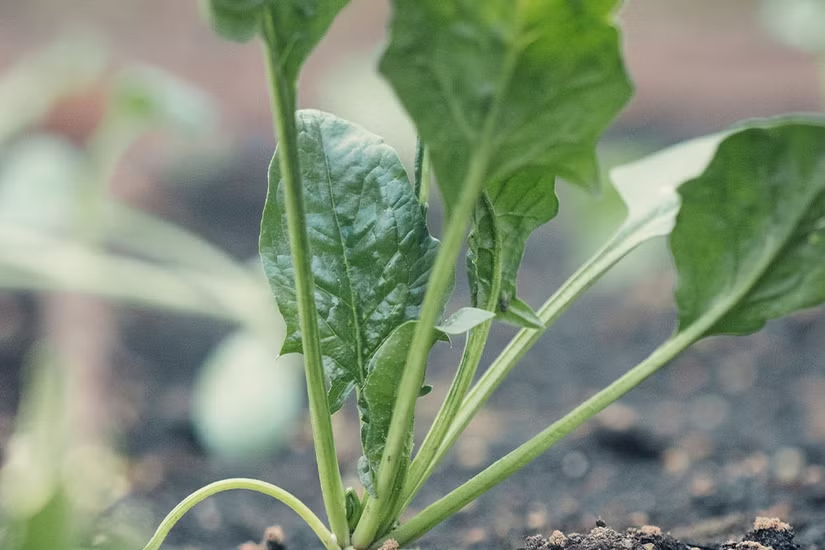
Spinach (Spinacia oleracea) is a cool-season crop that prefers mild temperatures and shorter days. It’s naturally sensitive to heat and long daylight hours. Several factors can trigger premature bolting:
1. Rising Temperatures
The number one cause of spinach bolting is warm weather. Spinach thrives between 45°F and 70°F (7°C–21°C). Once the temperature consistently exceeds 75°F (24°C), the plant senses stress and begins flowering.
Even a few hot days in a row can be enough to trigger the bolting response — especially if the soil dries out at the same time.
Tip: Grow spinach during the cooler months of spring and fall for best results.
2. Long Daylight Hours
Spinach is a long-day plant, meaning it bolts faster as days get longer. Once daylight exceeds about 13–14 hours, the plant’s internal clock signals it’s time to produce seeds.
This is why spinach planted too late in spring often bolts by early summer — it’s responding to the increasing daylight, not just heat.
Tip: For summer planting, choose bolt-resistant varieties and provide partial shade to mimic shorter days.
3. Plant Stress
Any form of stress — whether from drought, poor soil, or inconsistent watering — can push spinach to bolt prematurely.
- Dry soil causes root stress.
- Overcrowding limits airflow and nutrients.
- Nutrient deficiencies, particularly nitrogen, slow growth and make plants more likely to bolt early.
Tip: Keep soil consistently moist and nutrient-rich to minimize stress.
4. Variety Selection
Not all spinach is created equal. Some heirloom or early-spring varieties are more heat-sensitive than modern cultivars.
If you’re growing standard types in warm regions, you’ll likely see bolting much earlier.
Best bolt-resistant varieties include:
- ‘Bloomsdale Long Standing’
- ‘Space’
- ‘Tyee’
- ‘Butterflay’
- ‘Malabar Spinach’ (a heat-tolerant spinach alternative)
Tip: Always check seed packets for the words “slow-bolting” or “heat-resistant.”
5. Poor Timing of Planting
If spinach is planted too late in spring or too early in summer, it will quickly encounter both long days and warm weather — the perfect recipe for bolting.
Tip: For spring crops, sow seeds as soon as the soil can be worked (4–6 weeks before the last frost). For fall crops, plant about 6–8 weeks before your first expected frost date.
How to Prevent Spinach From Bolting
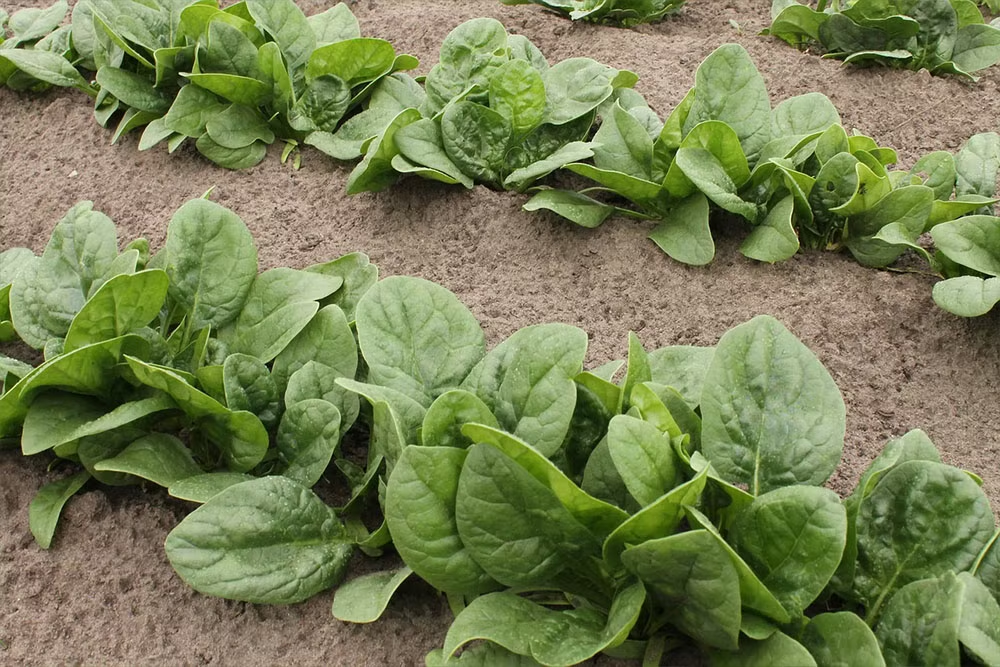
While you can’t completely stop bolting, you can take several smart steps to delay it — extending your spinach harvest by weeks.
1. Choose the Right Planting Time
Timing is everything when it comes to spinach.
- Spring crop: Sow seeds early — as soon as the ground is workable and temperatures are between 40°F and 60°F (4°C–16°C).
- Fall crop: Start seeds in late summer for a cool, steady fall harvest.
Pro tip: In mild climates, overwinter spinach by planting in late fall and harvesting again in early spring.
2. Provide Consistent Moisture
Spinach has shallow roots that dry out easily. Inconsistent watering creates stress, one of the biggest triggers of bolting.
- Keep the soil evenly moist but never waterlogged.
- Apply 1–1.5 inches of water per week, more during dry spells.
- Use drip irrigation or soaker hoses to avoid overhead watering, which can raise humidity and invite disease.
Tip: Add a 2-inch layer of mulch (like straw or compost) to retain moisture and cool the soil.
3. Give Spinach Some Shade
If temperatures start climbing, shade is your best friend.
- Use shade cloth (30–40%) to reduce sunlight intensity.
- Plant spinach between taller crops like peas or beans for natural afternoon shade.
- In containers, move pots to a location with morning sun and afternoon shade.
Shading reduces soil temperature and mimics early spring conditions, helping delay bolting.
4. Improve Soil Conditions
Healthy soil means less stress and slower bolting.
- Work in well-rotted compost or organic matter before planting.
- Spinach prefers loamy, well-drained soil with a pH between 6.5 and 7.0.
- Fertilize lightly with a balanced organic fertilizer or compost tea every 3–4 weeks.
Tip: Avoid over-fertilizing with nitrogen — it can encourage rapid growth that triggers early bolting.
5. Space Plants Properly
Crowded spinach plants compete for nutrients and air, creating stress that leads to early bolting.
- Thin seedlings to about 4–6 inches apart once they have two sets of true leaves.
- Rows should be 12 inches apart to allow airflow and easy watering access.
Good spacing not only prevents stress but also reduces the risk of fungal diseases like downy mildew.
6. Harvest Early and Often
Regular harvesting can help delay bolting. When you remove mature leaves, the plant redirects energy into new growth rather than flowering.
- Pick outer leaves first when they’re 4–6 inches long.
- Never remove more than one-third of the plant at a time.
- If you notice a flower stalk forming, harvest the entire plant immediately — the leaves will turn bitter within days.
Tip: Store harvested spinach in a cool, damp towel in the fridge to keep it fresh longer.
7. Use Successive Planting
Instead of planting all your spinach at once, stagger your plantings every 2–3 weeks.
This ensures that as older plants begin to bolt, younger ones will still be producing tender leaves. It’s one of the simplest ways to maintain a continuous harvest.
Bonus: Combine fast-maturing and slow-bolting varieties for extended yields.
Alternative Option: Try Heat-Tolerant Spinach Substitutes
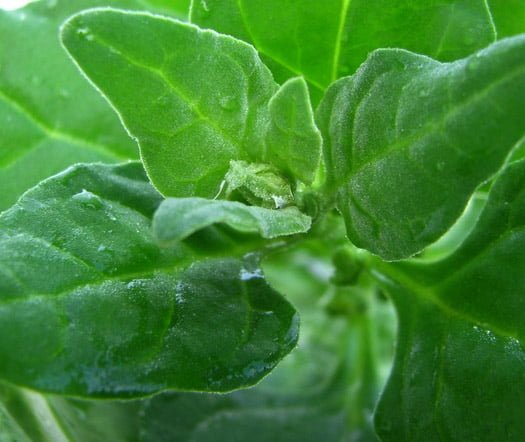
If you live in a warm or tropical climate, traditional spinach may never perform well during summer months. Thankfully, several greens mimic spinach’s texture and flavor but thrive in heat.
Excellent warm-weather spinach alternatives:
- Malabar spinach (Basella alba): A vining plant that loves heat and regrows easily.
- New Zealand spinach (Tetragonia tetragonioides): Thrives in hot weather and tastes like regular spinach.
- Amaranth (Callaloo): Mild, tender leaves that are excellent cooked.
These substitutes can keep your “spinach” supply going even when the real thing bolts.
How to Save Spinach Seeds (If Bolting Happens Anyway)
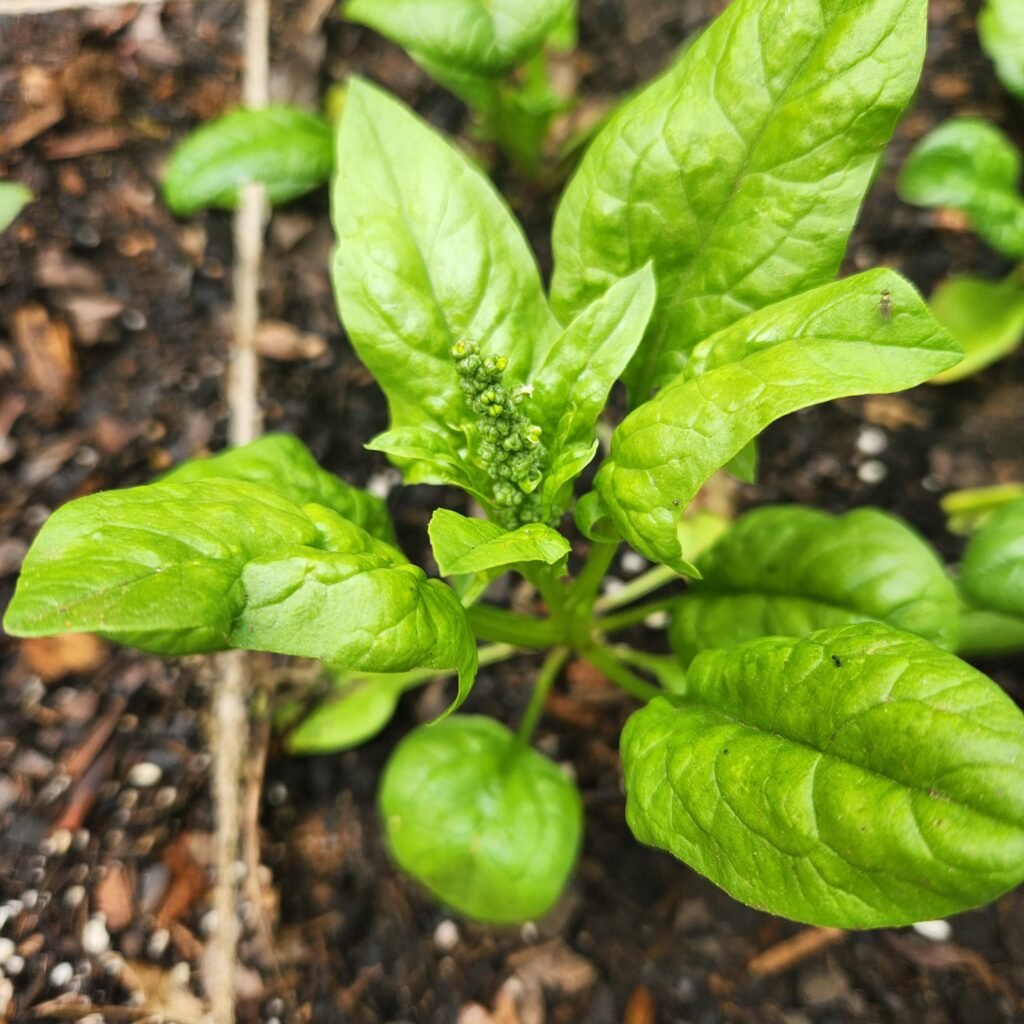
If your spinach does bolt, don’t see it as a total loss. Letting a few plants go to seed can benefit future crops.
- Allow the flower stalks to dry naturally on the plant.
- Once the seed heads turn brown and dry, cut them off and place in a paper bag.
- Gently rub to release seeds and store them in a cool, dry place.
Next season, you’ll have free, acclimated seeds that may even show better bolt resistance in your local conditions.
Final Thoughts
Spinach bolting is one of those classic gardening frustrations — but it’s not inevitable. By understanding that bolting is a natural response to heat, light, and stress, you can take steps to delay it and extend your harvest window.
Choose bolt-resistant varieties, keep the soil cool and moist, and time your planting for cooler months. With these strategies, you’ll enjoy a longer, more flavorful spinach harvest and fewer bitter surprises.
And if your spinach does decide to bolt despite your best efforts, don’t despair — just collect the seeds, start again, and know that every new crop brings you closer to mastering the rhythm of your garden.
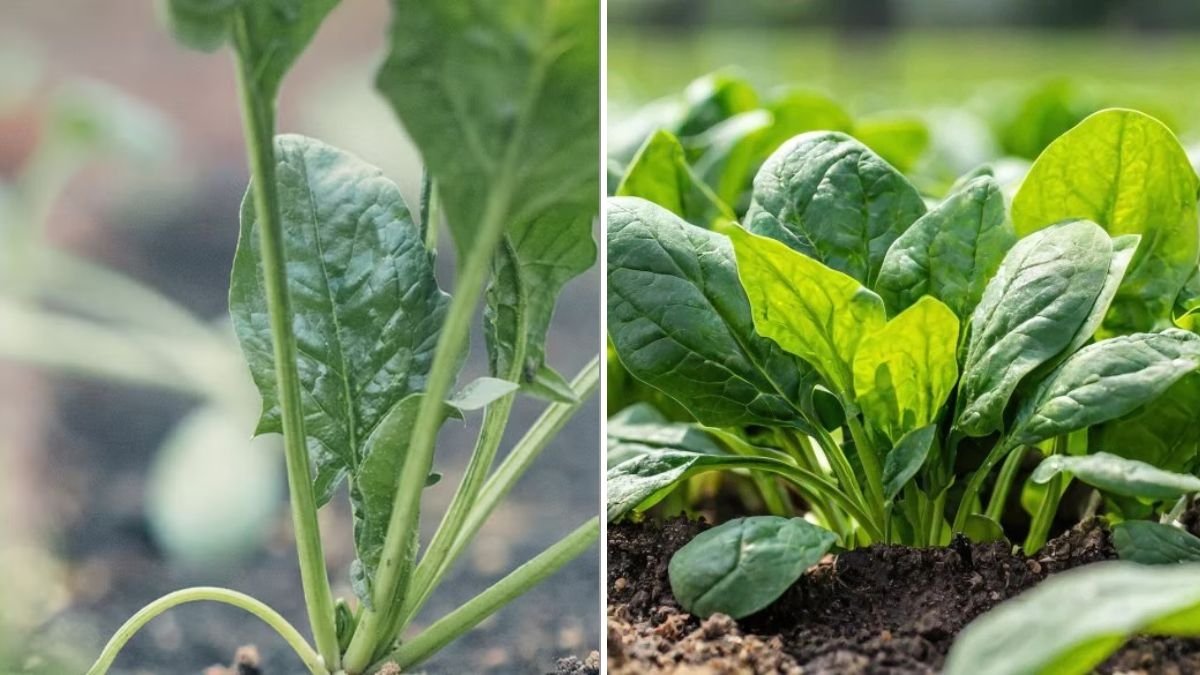





Leave A Comment